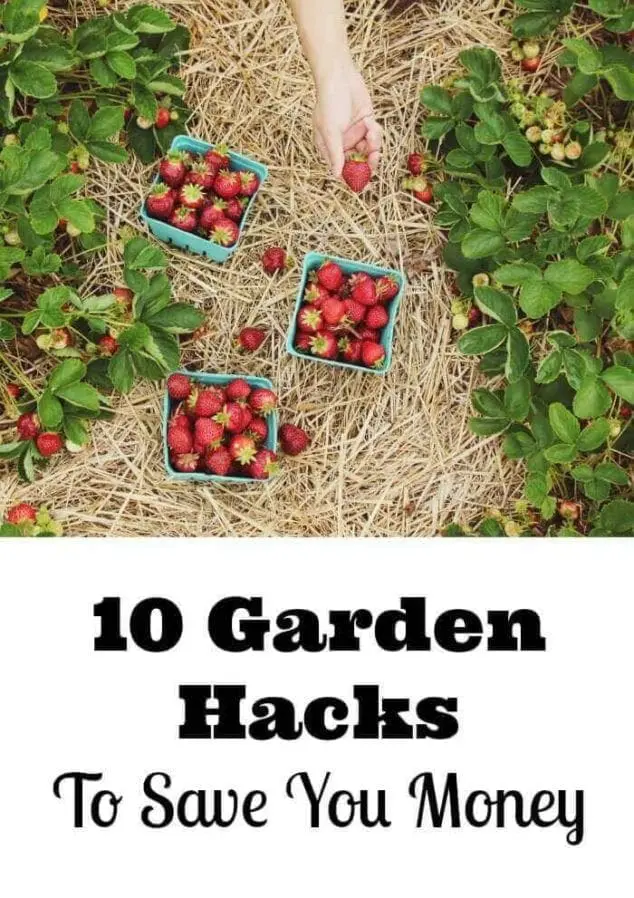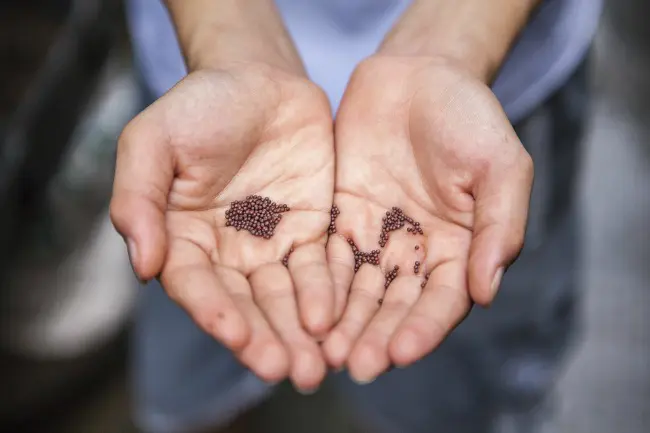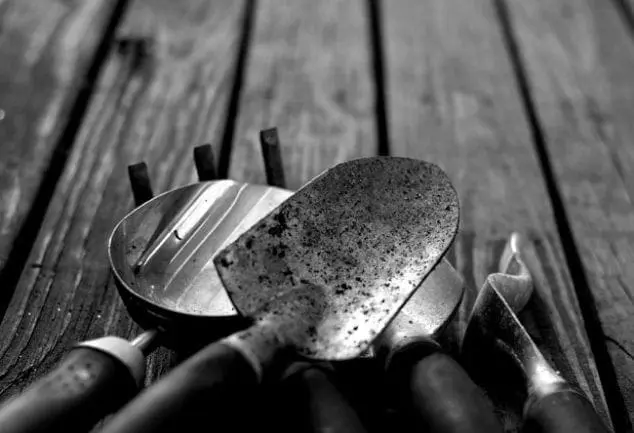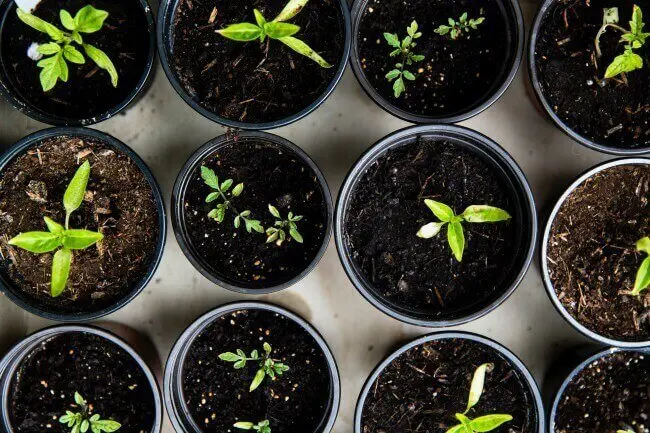Whether it’s your first year getting started with gardening or your 25th, inevitably you’ll think about all the investments you need to make to get your garden going. Between seeds, soil, mulch, garden tools, and of course time, the cost of gardening can get expensive. With that said, there are a variety of simple garden hacks that can help you save some money. Read on to learn more about some awesome vegetable garden hacks you can use to get your garden started on a budget.

10 Best Gardening Hacks To Save Money
Whether you want to do a small container garden in the city or you have a huge backyard for a dream garden, I think you will find these excellent garden hacks from Leigha Staffenhagen super helpful. She is the managing editor of Insteading.com, a homesteading and sustainability site focusing on everything from gardening and raising chickens to tiny homes and off-grid living. I hope you enjoy her insightful garden tricks to save you money!

Save Your Garden Seeds
Not only does saving your seeds each season save you a ton of money in the long run, but it helps to preserve heirloom seed varieties. Though the process of saving seeds can take some trial and error to learn how to do it correctly, it really pays off in the end.
And if you practice this garden hack with your kids, they get to see the whole life cycle of a plant, from seed to plant, and back to seed.
Start Composting Your Kitchen Scraps & Yard Waste
Instead of spending money on expensive (and harmful) fertilizers for your garden, start collecting your kitchen scraps and yard waste and compost them! This is a great way to use your grass clippings and other organic matter to make garden soil nice and rice. A compost bin is fairly affordable, and if you’re crafty, you can even build your own with a little effort out of scrap wood or pallets. Compost is a natural additive to your garden that will give you big results. And best of all, you’re keeping all sorts of stuff out of a landfill.
Grab A Bag of Coffee Grounds From Your Local Shop
Another natural garden additive, coffee grounds can work as mulch, fertilizer, and a natural pesticide. So before you go out and spend a bunch of money on big bags of stuff at the local garden store, stop at your local coffee shop and see if you can take their used coffee grounds off their hands! Most shops will give it away for free and grinds are especially good for acid-loving plants. Here is a detailed list of resourceful ways to use coffee grounds in your garden.

Invest In a Few High-Quality Gardening Tools
If you’re just getting started with gardening, it is inevitable that you’ll have to invest in gardening tools. But instead of picking up some cheap plastic garden tools, consider the long-term benefit you’ll get out of investing in a set of high-quality tools.
And before you go invest in those high-quality tools, take a look at your local Goodwill or Facebook Marketplace to see if others are selling gardening tools second hand. Oftentimes you can find some high-quality stuff for incredibly low prices.
Only Grow Vegetables and Fruits You’ll Use
When you start your first garden it can be incredibly tempting to buy every single plant you can get your hands on. But before you go and buy a bag full of random seeds, consider which vegetables, fruits, and herbs you’ll actually use. Not only will this allow you to focus all your attention on a select few plants, but you’ll save space in your garden. This garden hack is especially important if this is your first time gardening because it is good to start with just easy to grow fruits and vegetables that perform well in your area.

Get Garden Starts and Cuttings from Neighbors
Along with saving seeds, another way to start plants without making a stop at your local nursery is to chat with your friends and neighbors and see if they’re willing to give you starts and cuttings from their existing plants. Though you can’t do this with every plant, it generally works for indoor plants and rose cuttings, and next thing you know your home is going to be its own greenhouse!
Speaking of which, instead of buying plastic pots for your plant starts, you can reuse various everyday items for this purpose. For example, cut off the tops of plastic bottles, plastic milk jugs, then poke drainage holes in the bottoms and you have free pots for small plants. Place the top back on after you plant to create a mini greenhouse. You can also use toilet paper tubes in a tray or cardboard egg cartons as a great way for growing seeds.
Another great idea is to look up local seed swaps in your area and get your garden started that way! Gardeners love to share their love of gardening with others, and generally, are more than willing to share their young plants.
Build Your Own Garden Beds
Pre-built raised garden beds can cost up to $200, and usually, still, require assembly on your part. Alternatively, you can build your own garden beds! This garden hack will save you a ton of cash, especially if you used reclaimed wood. The nice part about raised garden beds is that unlike other woodworking projects, they don’t have to be perfect, and there are a lot of different DIY garden bed projects that are easy to follow. Or try this DIY pallet planter.

Take Advantage of All Your Space
Another gardening hack is to consider getting creative with the small space you have. Consider companion planting to grow things next to each other that won’t compete for root space and sunlight. This also a form of natural pest control and an organic gardening hack.
The roof of your backyard pergola, for instance, is a great place to grow climbing vines like cucumbers, peas, and pole beans. Pergolas also offer you lots of shade to protect you and your kids from the sun. So not only will it offer you more space to grow your garden, but it gives your kids a place to enjoy the outdoors that’s all theirs. And when the kids go to bed, it turns into the perfect parent hang out pad. It’s a win, win, win!
Collect Rain Water to Save Money & The Planet
If you live in an area that gets any amount of rain, it’s worth it to start collecting rainwater. Rainwater can be used for everything from watering your plants to washing your clothes, and it can help you cut down on your water bill. Not to mention, you’re taking advantage of a non-renewable resource that literally falls from the sky, for free! What’s more frugal than that? That being said, check to make sure that there aren’t any city ordinances preventing you from collecting rainwater. The last thing you want is an unexpected fine!
For a double hack, pour that rain water into an empty wine bottle and plant it upside down in a container pot that tends to dry out quickly. It will water itself!
DIY Plant Markers
Instead of buying plant markers at the store this growing season, consider making your own! This is a super simple project, but it’s fun for your kids and they will love getting to see their carrots, lettuce, tomatoes, and corn sprout!
Conclusion
I hope you found these vegetable garden hacks useful in saving yourself some hard work and creating a successful garden! What are your favorite gardening hacks? How do you save money on seasonal plants each spring? Let us know your favorite ways in the comments below!
Related Posts:

Vedanta says
Your post has been very helpful to us, thank you very much for these gardening hacks.